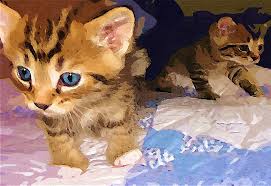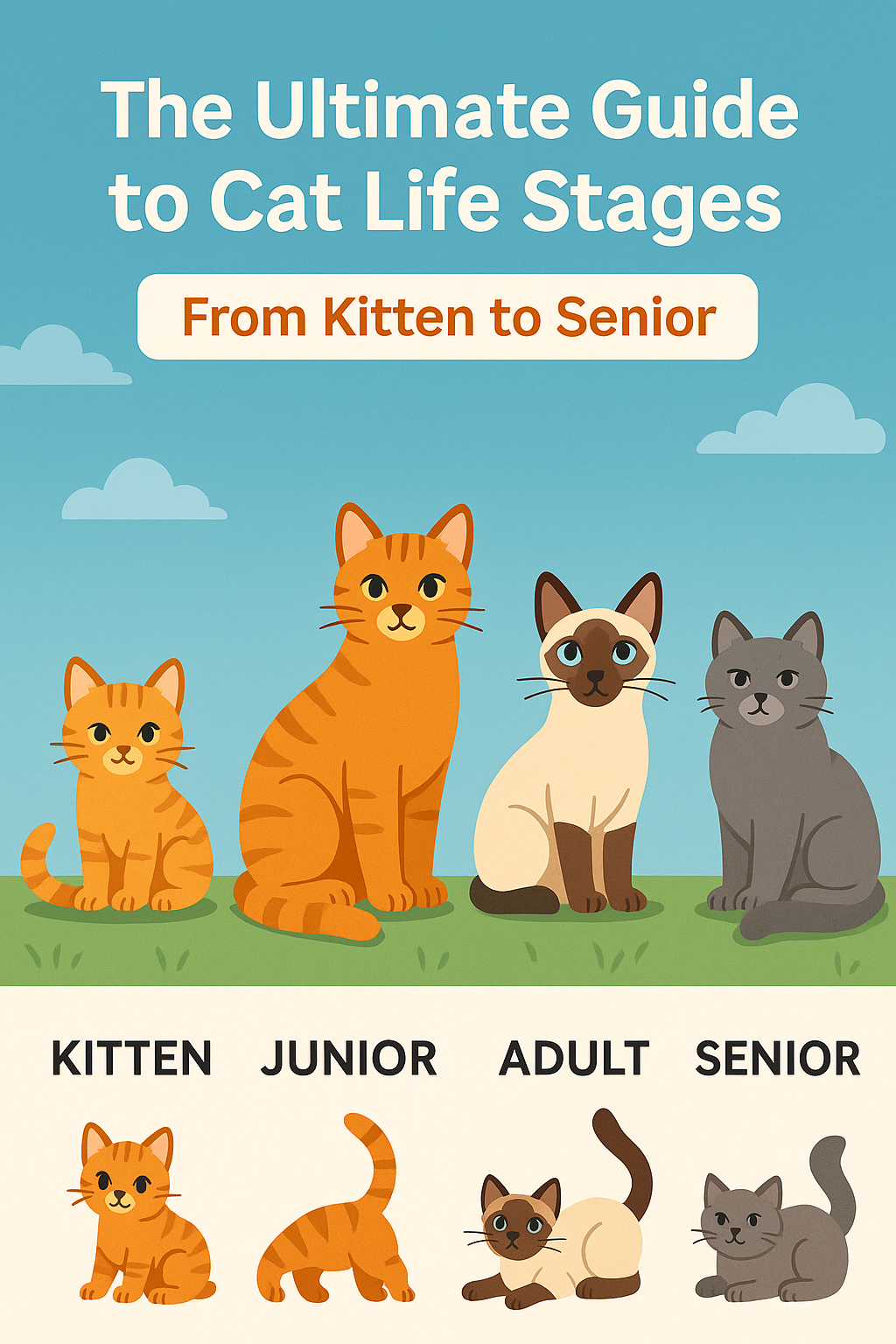
The Ultimate Guide to Cat Life Stages (With Pictures): From Kitten to Senior
Introduction to Cat Life Stages
Cats, like humans, go through distinct life stages, each with unique physical, emotional, and behavioral changes. Understanding these stages helps cat owners provide better care, adapt to their pet’s evolving needs, and build a lifelong bond. Whether you’re a new cat parent or a seasoned feline enthusiast, recognizing what to expect at each phase can ensure your kitty lives a healthy, happy life.
Table of Contents
From their playful kitten months to the slower, more contemplative senior years, cats change remarkably in terms of energy, diet, grooming needs, and health risks. Being aware of these transitions can empower you to make smarter choices—from selecting age-appropriate food to scheduling regular vet visits tailored to their life stage.
In this guide, we’ll walk through the seven primary cat life stages with pictures to help you visualize each phase. These images offer more than just cuteness—they help you spot physical traits and signs that signal a shift from one stage to the next.
We’ll cover:
- How kittens grow and learn during their early months
- What to expect as your cat matures into adulthood
- The special care senior and geriatric cats need in their twilight years
Each stage is accompanied by non-copyrighted, relevant images, and we’ve included practical tips to help you navigate feeding, health care, and enrichment. Whether you’re raising a kitten or supporting a senior cat, this guide is your go-to reference for every age and stage of feline life.
🐾 Kitten Stage (0–6 Months)
The kitten stage is perhaps the most exciting and adorable part of a cat’s life. Lasting from birth to around six months of age, this is a critical period of growth, learning, and social development. During this time, kittens grow rapidly—both physically and emotionally—and their personalities begin to emerge.
In these early weeks, a kitten is completely dependent on its mother or human caregiver. By eight weeks, most kittens are weaned and ready to explore the world. They’re highly energetic, curious, and eager to interact with their environment. This is also when their senses sharpen, coordination improves, and basic social behaviors develop.
Owners should prioritize bonding, gentle handling, and safe exploration. It’s also a good time to begin basic training, such as using a litter box or scratching post. Play is not just fun—it’s essential for mental stimulation and muscle development. Toys that mimic prey (like feather wands or mice) can help satisfy their hunting instincts in a safe way.
This stage is also critical for veterinary care. Kittens require several rounds of vaccinations, deworming treatments, and checkups. It’s often recommended to spay or neuter kittens by 5 to 6 months of age, depending on your vet’s advice.

🍼 Growth and Development
In the first six months, kittens experience exponential growth. At birth, they weigh just a few ounces, but by six months, they typically reach 5 to 6 pounds. Milestones come quickly: eyes open around 7–10 days, and walking starts by the third week. By two months, their coordination improves dramatically, and they begin to exhibit more independence.
Socialization is key during weeks 2–9, when kittens learn from their mother, littermates, and humans. Exposing them to different people, gentle handling, and varied environments helps prevent fearfulness or aggression later.
Teething begins around three weeks and continues through five months. This is when kittens chew more and may bite during play—redirecting them with appropriate chew toys is crucial. Make sure to kitten-proof your home, as they love to explore tight spaces and chew on wires.
🍽️ Feeding Requirements
Kittens have high nutritional needs to support their rapid growth. From birth to four weeks, they rely solely on their mother’s milk or a specialized kitten milk replacer. At about four weeks, you can begin to introduce soft wet food mixed with formula, gradually transitioning to kitten kibble or canned food by 8–10 weeks.
It’s essential to feed a diet specifically formulated for kittens, as adult cat food lacks the calories, protein, and nutrients they need. Look for formulas rich in DHA (for brain development), protein (for muscle), and calcium (for bones and teeth).
Feeding small, frequent meals—about four times a day—is ideal for their tiny stomachs. Fresh water should always be available, even if they’re still nursing.
🧸 Socialization Tips
The earlier a kitten experiences positive interactions with humans, animals, and environments, the better-adjusted they’ll be as adults. This period is crucial for shaping future behavior, so gentle and consistent handling is essential.
Introduce kittens to sounds (vacuum, doorbell), handling (grooming, nail trimming), and various people. Avoid overwhelming them—short, positive exposures are best. Gradual introductions to other pets should be supervised to ensure safety and calmness.
Use treats and praise to reinforce confident behavior. Playtime not only bonds you with your kitten but also teaches boundaries and bite inhibition. Avoid using hands or feet as toys, as this encourages aggressive play.
Junior Stage (6 Months – 2 Years)
The junior stage marks your cat’s transition from kittenhood to young adulthood. It’s a time of continued growth—both physically and emotionally—and an essential period for setting boundaries and encouraging positive habits. Cats in this stage may look like adults on the outside, but they’re still developing maturity on the inside.
From 6 months to around 2 years old, cats become more independent, exploratory, and energetic. This is when their personalities truly take shape. Some may be playful and outgoing, while others become more reserved and calm. Hormonal changes may also bring about new behaviors, especially in unspayed or unneutered cats.
This is also a stage when bad habits can form if you’re not consistent with discipline and routine. Establishing daily rituals—like regular feeding times, scheduled play sessions, and grooming—can provide structure and stability for your cat. Social interactions, stimulation, and a safe environment are still very important.
While they may appear sleek and strong, junior cats are still vulnerable to injury and illness. Regular vet visits and a balanced diet are essential to help them reach their full potential.
💪 Physical Maturity
Between 6 months and 2 years, your cat will complete most of its physical development. They’ll gain muscle, their bones will strengthen, and they’ll reach their full adult size—though some larger breeds like Maine Coons may continue growing into their third year.
This stage often includes increased energy and bursts of hyperactivity, especially in the evenings (a behavior known as the “zoomies”). It’s normal and healthy, but it does require a cat-safe home to avoid accidents or injuries.
Spaying or neutering is typically done around this stage if it hasn’t been completed earlier. These procedures not only help prevent unwanted litters but can also reduce the risk of certain diseases and undesirable behaviors like spraying or yowling.
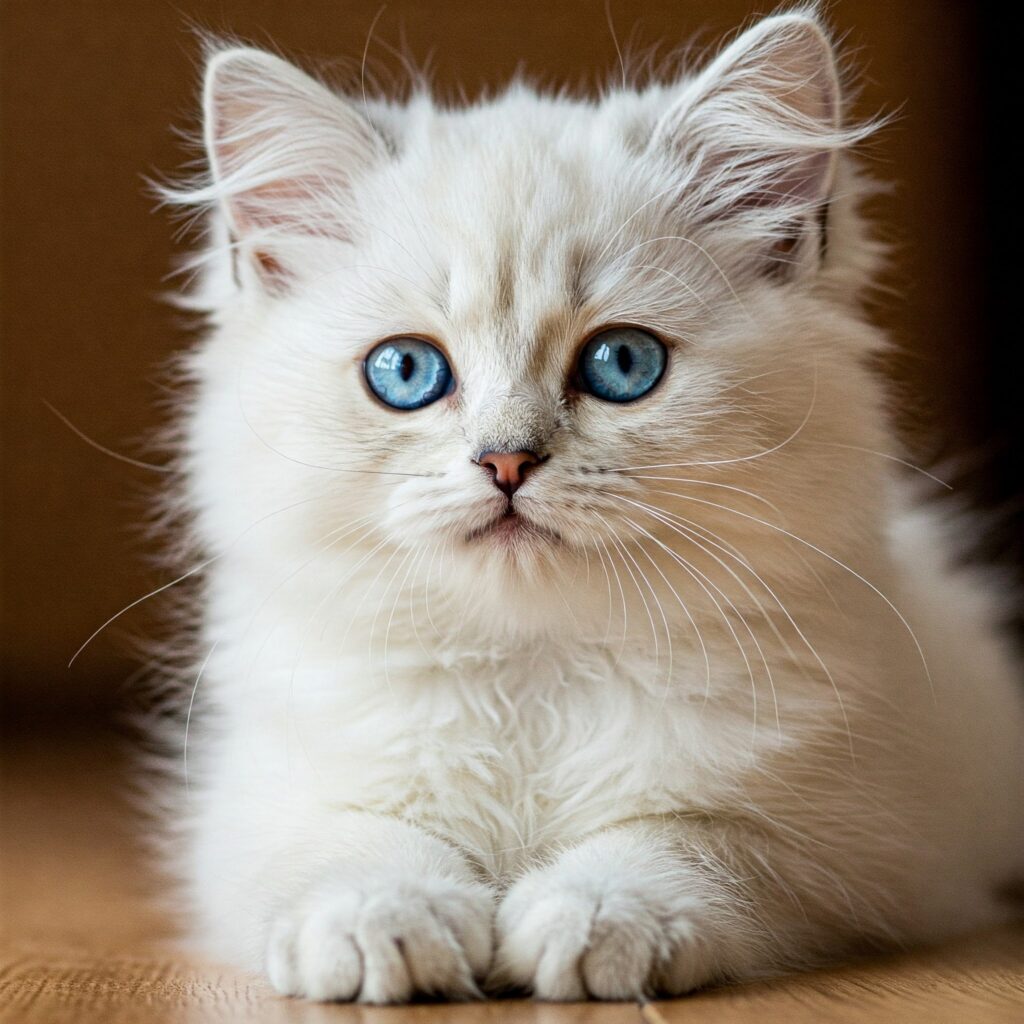
🧠 Behavioral Patterns
Junior cats are like teenagers: testing limits, exploring boundaries, and seeking independence. You might notice increased climbing, scratching, or even stubbornness. While this can be a frustrating phase for some pet parents, it’s also a perfect opportunity for training.
Positive reinforcement works wonders. Reward good behavior with treats, toys, or praise, and redirect undesirable actions (like biting or scratching furniture) using safe alternatives such as scratching posts or puzzle feeders.
They also begin to develop preferences—for food, play, people, and routines. Pay attention to these likes and dislikes, as they can help you build a stronger bond and adjust care as they grow.
🥣 Ideal Nutrition
As your cat completes its growth phase, its dietary needs begin to shift. While high-calorie kitten food may still be appropriate up to 12 months, most junior cats should transition to adult cat food between 12–18 months, depending on their size, breed, and vet’s advice.
Choose a high-quality adult formula rich in protein and free of unnecessary fillers or by-products. Pay attention to portion control—overfeeding during this stage can lead to early obesity, which is difficult to reverse later.
Fresh water should always be available, and feeding scheduled meals rather than free-feeding can help prevent weight gain and improve digestion. If your cat has specific dietary needs or sensitivities, consult your vet for tailored nutrition advice.
Prime Stage (3–6 Years)
The prime stage is the golden era of your cat’s life. Between the ages of 3 and 6, cats are at their peak physical health, strength, and confidence. They’ve fully matured emotionally and physically, and their personalities are firmly established. This stage is often the most balanced and low-maintenance time for cat parents, but that doesn’t mean your feline friend doesn’t need ongoing care and attention.
During this phase, your cat should be playful, active, and alert. They’re often more predictable in their behavior and may have settled into established routines. While they might be slightly less hyper than in their junior stage, they still have plenty of energy and enjoy interactive play.
This is also the time to maintain good lifelong habits. Preventive health care, proper nutrition, and regular mental and physical stimulation are key to helping your cat stay healthy for years to come. Since issues like obesity, dental disease, and early arthritis can start creeping in during this time, it’s essential to stay proactive.
🏥 Health Considerations
Although your cat may appear to be in perfect health during their prime years, this is the time to be vigilant. Many chronic conditions such as dental disease, early signs of kidney problems, and weight-related issues begin subtly during this stage.
Schedule annual vet visits that include a complete physical exam, dental checks, and bloodwork. These checkups can detect problems early and help you manage your cat’s health before symptoms become severe. Flea, tick, and worm prevention should continue year-round, especially for indoor-outdoor cats.
Keep an eye out for changes in appetite, litter box habits, or behavior—subtle shifts can indicate underlying health concerns.
🎾 Play and Exercise
Even though cats in their prime may be calmer than juniors, they still need regular play and activity. Without it, they can become bored or overweight. Structured play sessions—15 to 20 minutes twice a day—help them stay fit and mentally sharp.
Use a mix of toys like feather wands, laser pointers, and puzzle feeders to encourage different types of movement and stimulation. Cats also enjoy climbing and perching, so investing in a good cat tree or wall shelves can provide valuable enrichment.
Interactive toys that mimic hunting behaviors keep your cat engaged and help reduce stress or behavioral issues like aggression or anxiety.
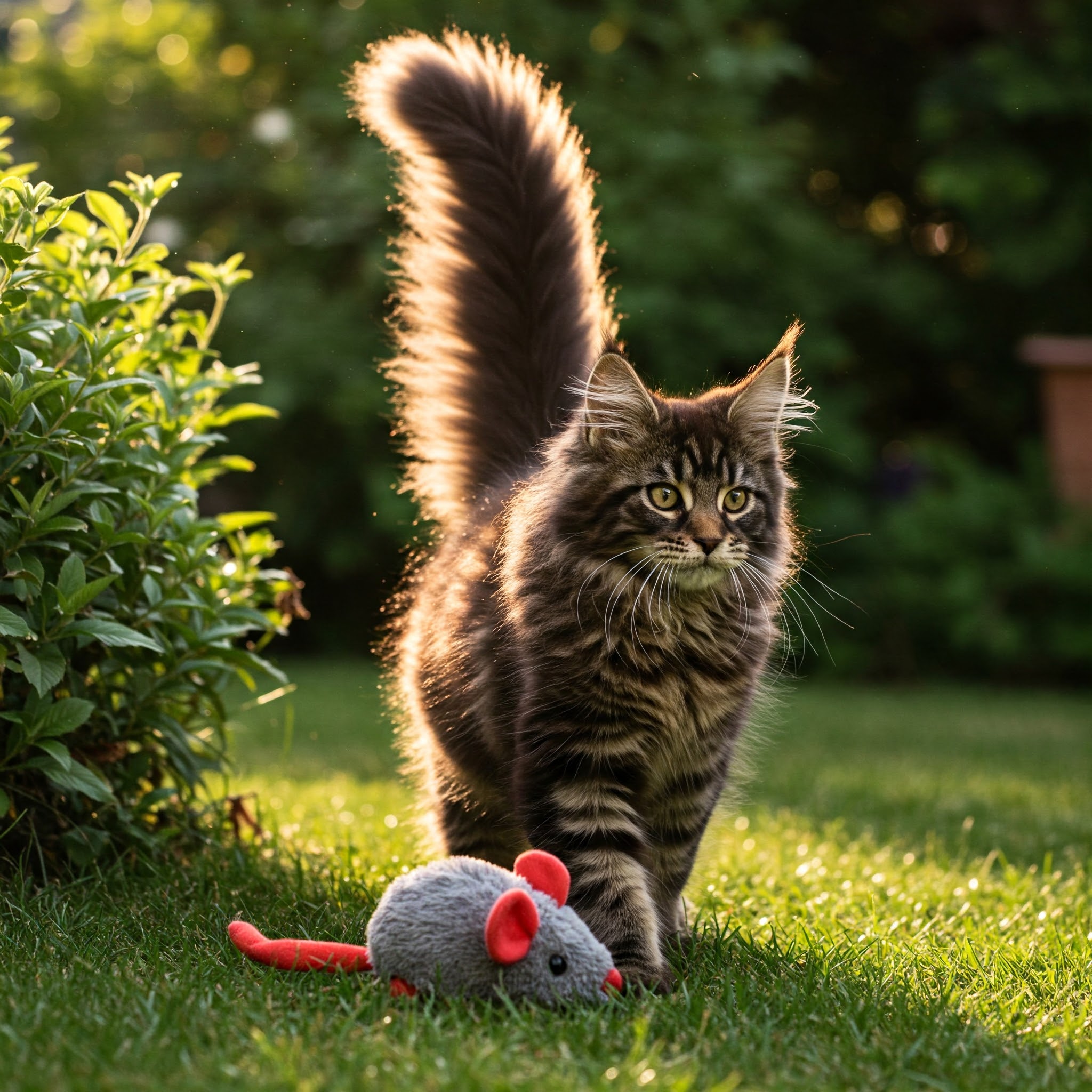
🧼 Grooming Needs
Grooming in this stage becomes more about maintenance than training. Most prime-age cats are excellent self-groomers, but regular brushing helps reduce hairballs and keeps their coat shiny and healthy.
Short-haired cats typically need brushing once a week, while long-haired breeds may benefit from 2–3 sessions weekly. Regular nail trimming and dental care should continue during this stage, especially since dental plaque starts to build more rapidly.
This is also the time to establish a routine for ear checks, eye cleaning, and even occasional baths (if needed). The earlier these routines are introduced, the easier they become over time.
Mature Stage (7–10 Years)
As cats enter the mature stage of life, typically between 7 and 10 years of age, subtle shifts in their health, behavior, and energy levels start to appear. While they may still look youthful and active, the aging process has begun, and it’s time to adjust their care routine to reflect this transition.
Your cat may begin to slow down slightly, prefer longer naps, and show less enthusiasm for intense play sessions. They might gain weight more easily due to a slowing metabolism or become pickier about food. Many cats at this stage are still in excellent health, but early signs of age-related issues—like dental problems, joint stiffness, or organ changes—may start to surface.
This stage is about maintaining quality of life through proactive wellness care. Think of it as a time to support healthy aging rather than react to illness. Routine vet visits, nutritional adjustments, and thoughtful environmental enrichment can go a long way in keeping your mature cat comfortable and happy.
🐢 Slower Metabolism
One of the first noticeable changes in mature cats is a slower metabolism, which often leads to weight gain. Reduced activity means they burn fewer calories, even though their food intake may remain the same. Without proper management, this can lead to obesity, which increases the risk of diabetes, arthritis, and heart issues.
To support a healthy weight, consider switching to a “mature cat” or “7+” formula, which is lower in calories but still rich in protein and essential nutrients. Measure food portions carefully, and avoid excessive treats.
Encourage gentle exercise through short play sessions and access to climbing structures. Even a few minutes of interactive play can help keep their joints limber and their weight under control.
🩺 Preventive Health Checkups
Preventive care becomes even more critical during the mature stage. Even if your cat seems healthy, underlying issues like kidney disease, hyperthyroidism, or high blood pressure can begin to develop without obvious symptoms.
Vets typically recommend biannual wellness exams at this age. These visits should include bloodwork, urinalysis, and dental evaluations. Catching health problems early can make treatment more effective and less expensive in the long run.
Also, be observant at home. Look for subtle changes in behavior, litter box use, appetite, or grooming habits. These small signs often offer the first clue that something may be wrong.
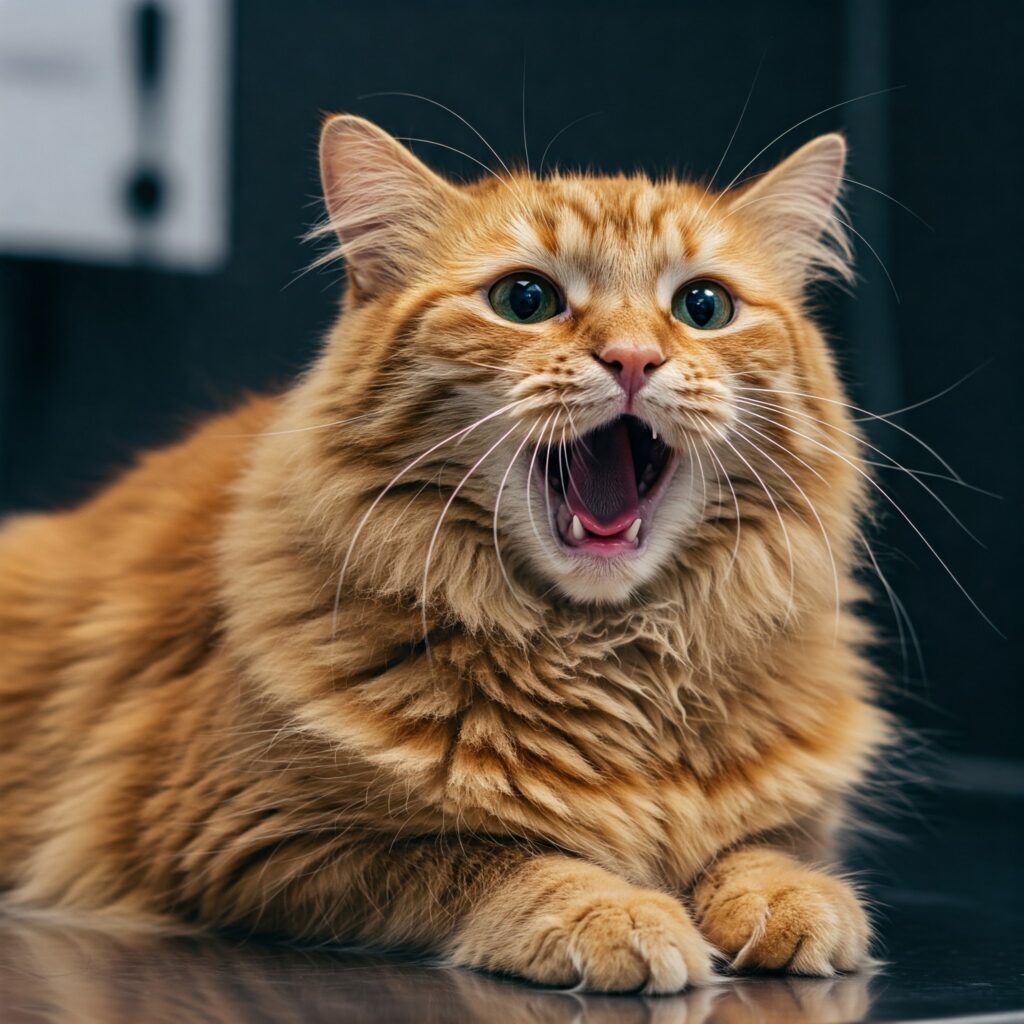
🥗 Dietary Changes
Cats in this stage often benefit from diets tailored for mature or senior cats. These foods are typically lower in fat and calories but may include added ingredients like omega-3s for joint health, antioxidants for immune support, and fiber for digestion.
Hydration is also a growing concern. Older cats tend to drink less, so incorporating wet food or adding water or broth to meals can help. A pet water fountain can also encourage increased water intake.
You may also want to offer smaller, more frequent meals if your cat becomes finicky or shows signs of gastrointestinal sensitivity. Always consult your vet before making significant changes to your cat’s diet.
Senior Stage (11–14 Years)
When cats reach the senior stage, between 11 and 14 years old, they often begin to show more visible signs of aging. While many still enjoy a good stretch in the sun or a slow game of chase, changes in mobility, senses, and health become more apparent. It’s a time for increased attention to comfort, wellness, and emotional support.
Senior cats may sleep more, move slower, or become less interested in their usual toys or routines. Some may even become more vocal or develop anxiety if their senses begin to fade. Regular routines and a stress-free environment become especially important at this point in life.
The senior years aren’t necessarily a decline—they’re just different. With the right care, cats in this stage can still be affectionate, playful, and full of personality. Providing age-appropriate nutrition, managing chronic health issues, and making small adjustments to their home environment can significantly improve their quality of life.
🦴 Mobility Challenges
Arthritis and joint stiffness are common in senior cats, though they often suffer in silence. You may notice your cat avoiding stairs, hesitating to jump onto furniture, or grooming less because it’s painful to twist or stretch.
To help, consider low-sided litter boxes, soft bedding, ramps, and heated mats to soothe achy joints. Regular, low-impact play—like chasing a toy on the ground—can help maintain mobility without overexertion.
Your vet may recommend joint supplements or anti-inflammatory medications. Omega-3 fatty acids and glucosamine are often included in senior-specific cat foods for joint support, but additional supplements might be necessary for more advanced issues.
🩹 Common Health Issues
Senior cats are more prone to chronic conditions such as kidney disease, hyperthyroidism, diabetes, and high blood pressure. Dental issues like gingivitis and tooth decay are also very common, and can make eating painful.
Frequent checkups—ideally every 6 months—are critical. These should include full blood panels, blood pressure checks, and dental exams. Early detection can slow the progression of many age-related conditions and improve quality of life.
At home, monitor for signs like increased thirst, weight loss, vomiting, bad breath, or changes in bathroom habits. These symptoms should never be ignored at this stage.
🏡 Comfort and Care Tips
Creating a supportive and comfortable environment makes a world of difference for senior cats. Keep food, water, and litter boxes easily accessible—ideally on the same level of your home to avoid stairs. Add extra litter boxes if mobility is an issue, and keep them in quiet, easily reached areas.
Make sure bedding is soft, warm, and located away from drafts. Heated beds or pads can soothe joints and provide comfort during colder months. Senior cats also appreciate consistent routines and a calm, low-stress atmosphere.
Lastly, don’t underestimate the power of affection. Gentle grooming, cuddles, and one-on-one time provide not only comfort but also emotional enrichment that keeps older cats feeling secure and loved.
Geriatric Stage (15+ Years)
Cats who live beyond 15 years are considered geriatric, and while they may be slowing down significantly, many continue to live rich, fulfilling lives with proper care and attention. This stage brings noticeable aging signs—like reduced mobility, cognitive decline, and increased sensitivity to change—but with gentle support, your cat can still enjoy comfort, affection, and even playful moments.
At this point, geriatric cats often sleep most of the day, may experience sensory loss (hearing or vision), and can become confused or anxious. Some may forget litter box routines or get startled more easily. It’s important to be patient, observant, and compassionate.
Daily monitoring becomes more important than ever. Tiny changes in behavior, weight, or routine can be signs of more serious conditions. Regular veterinary checkups every 4–6 months are crucial, and home care should focus on comfort, safety, and emotional support.
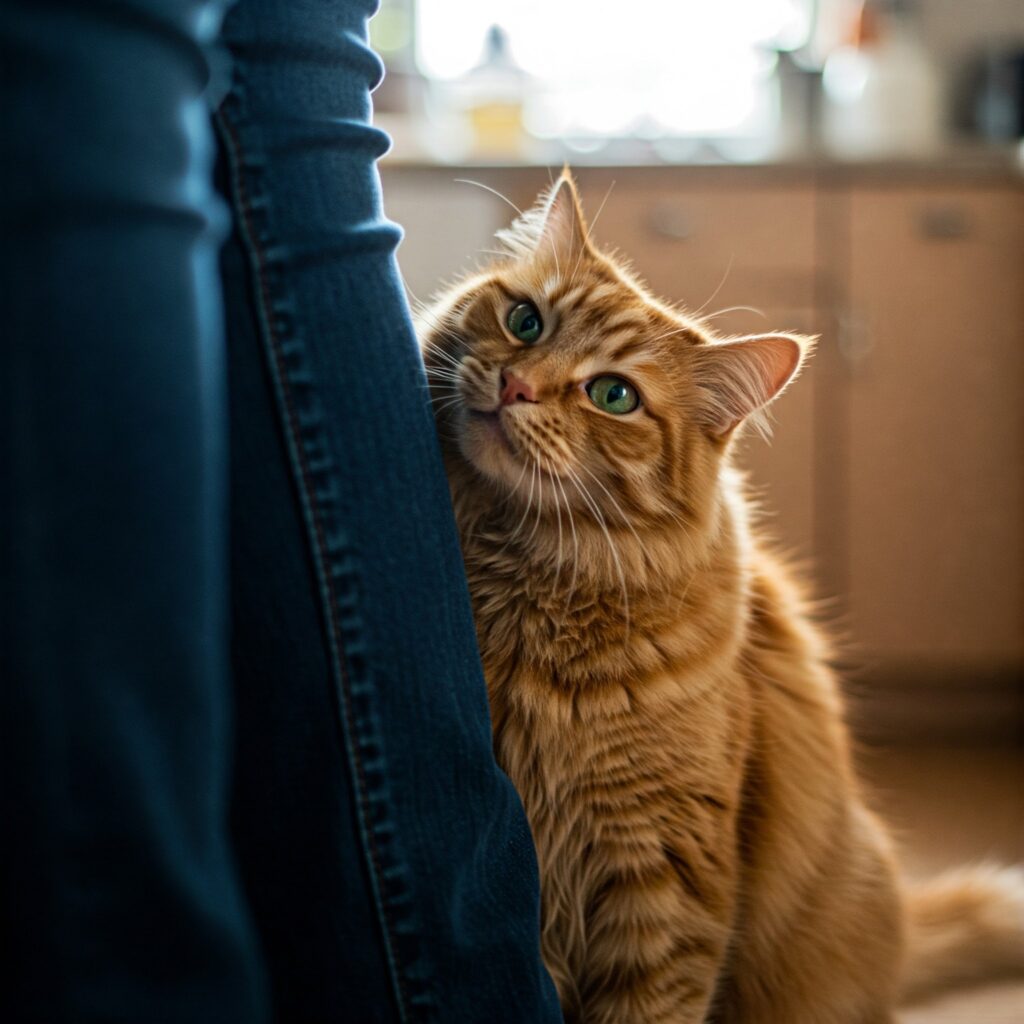
🌅 End-of-Life Care
End-of-life care isn’t just about medical treatment—it’s about maintaining dignity and peace for your cat. Palliative care focuses on minimizing pain, keeping routines predictable, and creating a peaceful, loving environment.
Your vet may prescribe pain relief, hydration support, or appetite stimulants depending on your cat’s needs. If mobility is severely limited, provide food, water, and litter options within easy reach, and ensure soft, clean bedding is always available.
Watch closely for signs of distress: hiding, panting, rapid weight loss, or difficulty breathing may indicate it’s time to consider humane options like euthanasia. It’s a heartbreaking decision, but sometimes the most compassionate one.
💖 Enhancing Quality of Life
Despite the physical limitations of old age, geriatric cats can still enjoy life. Maintain gentle routines, speak softly, and engage them in ways that don’t require much energy—like brushing, soft petting, or cozy lap time.
Stimulate their senses with safe indoor exploration, windows with views, and calming music. If their vision is fading, avoid rearranging furniture to reduce disorientation. A pheromone diffuser can also ease anxiety and help your cat feel safe.
Even if your cat doesn’t move much, being present with them—reading aloud, sitting close, or offering a warm lap—can bring them immense comfort and connection.
🌈 When to Say Goodbye
Knowing when to let go is the hardest part of loving a cat. Quality of life should be your guiding principle. If your cat can no longer eat, move, or interact without pain or distress, it may be time to consider a peaceful goodbye.
Talk openly with your vet—they can assess your cat’s condition and help guide your decision. Many pet parents choose in-home euthanasia so their cat can pass in a familiar, loving environment.
Remember, choosing to ease your cat’s suffering is an act of deep love and kindness. Grieve openly, and seek support if needed. Your bond was special, and your cat knew they were cherished.
10 Frequently Asked Questions About Cat Life Stages
Here are 10 of the most common and important questions cat owners ask about feline life stages, along with helpful, easy-to-understand answers.
1. At what age is a cat considered a senior?
Cats are typically classified as seniors at 11 years old, though some age-related changes can begin as early as 7. After 15 years, a cat is considered geriatric.

2. How can I tell what life stage my cat is in?
Look at your cat’s age, behavior, and physical development. Kittens are under 6 months, juniors are 6 months to 2 years, adults are 3–6, mature cats are 7–10, seniors are 11–14, and geriatric cats are 15+. Your vet can also help confirm this during checkups.
3. When should I switch from kitten food to adult food?
Most kittens should transition to adult cat food at around 12 months old, though some large breeds may benefit from kitten food a bit longer.
4. Do older cats need less food?
Generally, yes. Senior and mature cats have slower metabolisms and are less active, so they need fewer calories—but still require high-quality nutrients.
5. What health problems are common in senior cats?
Senior cats are more prone to kidney disease, hyperthyroidism, arthritis, dental issues, and diabetes. Regular vet visits help catch and manage these conditions early.
6. Is it normal for older cats to sleep more?
Yes. Cats naturally sleep a lot, but older cats may sleep up to 18–20 hours a day. However, changes in sleep patterns can also indicate health issues, so monitor any unusual shifts.
7. When should I take my cat to the vet more often?
After age 7, consider twice-yearly checkups to monitor for age-related health issues. Geriatric cats (15+) may benefit from visits every 4–6 months.
8. Can cats live past 20 years?
Yes! With proper care, some cats live to 20 or older. Indoor cats, in particular, tend to have longer lifespans thanks to reduced exposure to hazards.
9. Do cats go through behavioral changes with age?
Absolutely. Older cats may become more reserved, vocal, or anxious, especially if they’re experiencing cognitive decline. A stable routine can help ease their stress.
10. What’s the best way to support a geriatric cat?
Provide a quiet, safe, and cozy environment, adjust their living space for easier mobility, stay on top of vet visits, and shower them with love and patience.
Conclusion: Understanding and Embracing Every Life Stage of Your Cat
Cats are more than just pets—they’re companions who grow, change, and age right alongside us. Understanding the various life stages of a cat, from playful kittenhood to the gentle days of their geriatric years, allows you to care for your feline friend with deeper insight and compassion.
Each stage brings unique joys and responsibilities. Kittens require energy and attention for growth and training. Junior cats push boundaries and learn independence. Adult and prime cats thrive with consistent routines and enrichment, while mature and senior cats rely on you to support their aging bodies and changing needs. By the time your cat enters the geriatric stage, your role becomes that of a gentle guardian—focused on comfort, dignity, and love.
This guide shows that caring for a cat isn’t just about meeting basic needs—it’s about building a lifelong relationship. Recognizing the signs of physical and emotional change at each stage can help you make smart, compassionate decisions, whether it’s adjusting their food, booking a vet checkup, or just offering a warm, safe place to rest.
No matter how long your cat lives—10 years, 15, or even 20—the time you spend together leaves a lasting impact. Cats are creatures of habit, love, and quiet loyalty. By tuning in to their life stages, you’re not just a caretaker—you’re a partner in their journey.
So take pride in every step, every purr, and every shared moment. With thoughtful care, your cat can live a long, healthy, and happy life, full of love from kittenhood to their final nap in the sun.

